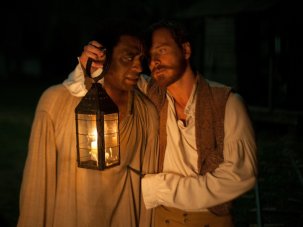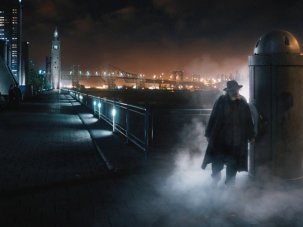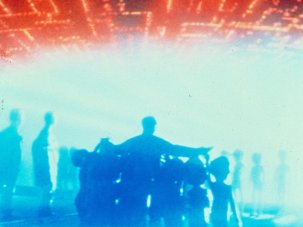from our April 2014 issue
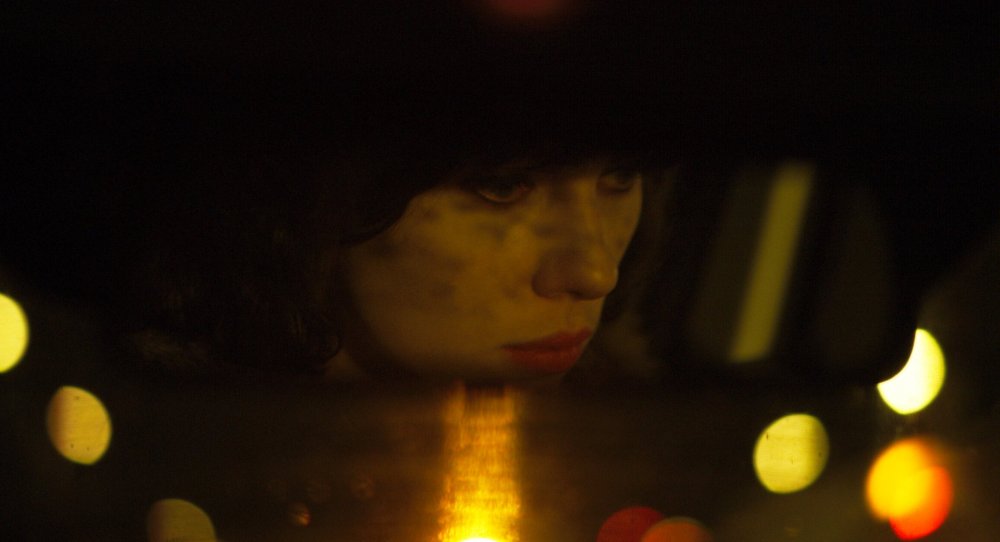
Under the Skin (2013)
One of Sight & Sound’s best films of 2014.
People who saw Birth (2004), and saw beyond a surface farfetchedness to its sublime undertow of feeling, knew to be excited about the next Jonathan Glazer movie. The wait ends, nearly a decade later, with another birth of sorts: a Kubrickian pre-title sequence that begins with a pinprick of light in the middle of darkness, then stellar dazzle, circular eclipses – and finally the warm-hued iris of an eyeball.
United Kingdom/USA/Switzerland 2013
Certificate 15 107m 59s
Crew
Director Jonathan Glazer
Produced by James Wilson, Nick Wechsler
Written by Walter Campbell, Jonathan Glazer
Based on the novel by Michel Faber
Director of Photography Daniel Landin
Editor Paul Watts
Production Designer Chris Oddy
Music Composed by Mica Levi
Production Sound Mixer Nigel Albermaniche
Costume Designer Steven Noble
Cast
Laura Scarlett Johansson
Jeremy McWilliams
Lynsey Taylor Mackay
Dougie McConnell
Kevin McAlinden
D Meade
Andrew Gorman
Joe Szula
Krystof Hadek
Roy Armstrong
Alison Chand
Ben Mills
Dolby Digital
In Colour
[1.85:1]
Distributor Studiocanal Limited
UK release date 14 March 2014
► Trailer
Then we’re suddenly rushing through depth and lights as if entering 2001’s Star Gate, but the lights begin to look like those of passing cars and we realise we’re with a biker speeding along one of planet Earth’s motorways. Michel Faber’s 2000 source novel delayed revealing its enigmatic protagonist’s extraterrestrial origins but – with the secret already out in the ether – this otherworldly opening makes it apparent from the start. Besides, what else but her perspective of total otherness could explain why the urban Scotland of shopping centres, nightclubs and car parks appears here, even to us, so foreign and incomputable?
This unnamed predator (called Isserley in the book and played with glassy allure by Scarlett Johansson) is not a naïf like the alien visitors in The Man Who Fell to Earth (1976) or John Carpenter’s wonderful, underrated Starman (1984), whose first small steps for alienkind are defined by childlike wonder and befuddlement. Under the Skin’s ‘heroine’ knows how to drive a car and turn a sentence, and seems to intuit the potency of red lipstick as she kerb-crawls the Scottish city picking up men to lure to strange inky fates in vast black rooms.
From her driving seat, we see a gritty, social-realist Britain: familiar high-street shops, ordinary faces, shabby roadsides. The first section of Glazer’s film plays like an oneiric northern-climes recasting of Abbas Kiarostami’s 10 (2002), in which an Iranian woman driver’s conversations with successive passengers cumulatively take the temperature of a nation. The chipper lad, the cocksure charmer, the deformed lonely-heart – in Under the Skin, each takes his turn in the passenger seat, entranced by this shock of Scarlett in Glasgow, beguiled by her ingratiating smile. Her tender flirtation flatters one after the other, so that longing clouds their ability to spot a praying mantis about to strike.
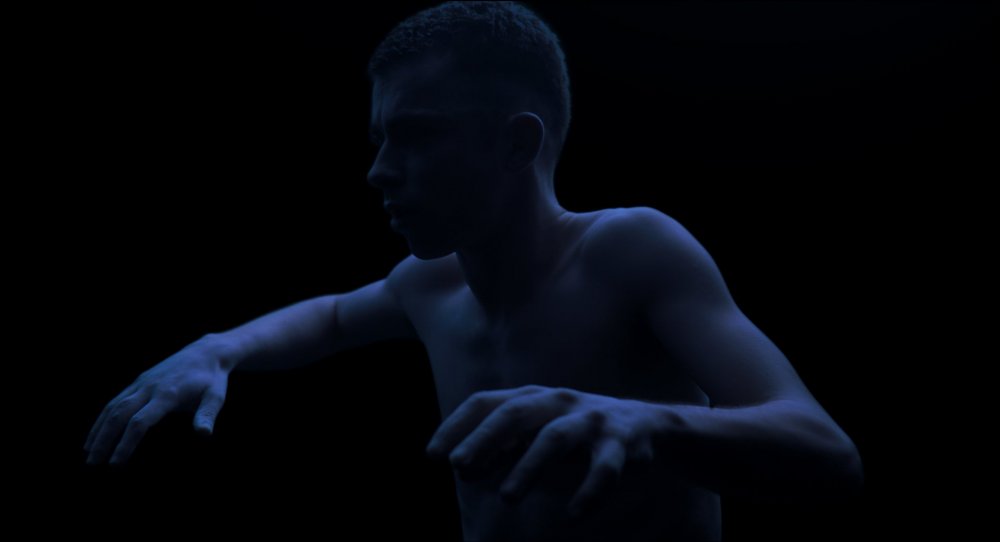
Under the Skin (2013)
Nothing in our kitchen-sink tradition prepares us for the formidable scenes in which these unwitting passers-by follow the alien femme fatale into her lair, feeling the siren’s pull as they shed their clothes bit by bit in a Tardis-like cavern of endless blackness. Astonishing music by Micachu’s Mica Levi – ominous death drums and shrieking strings – scores these abstracted dances of erotic doom, as the victims obliviously wade into lethal, liquid depths like insects succumbing to the final stickiness of a Venus fly trap while happily drunk on the sweet scent.
In the novel, these killings are carried out as a kind of interplanetary meat farming; here, Glazer and co-screenwriter Walter Campbell strip away explanation, keeping the victims’ exact fates obscure. We feel only the chill of the killer’s remorselessness. It’s a hostile vantage point from which to view the mill and throng of contemporary Glasgow, and the narrow gaze of Under the Skin is tainted with cynicism, even disgust. Men are defined by their concupiscence; good Samaritans are motivated by self-interest; even the wilderness, where the film escapes for its final act, conceals depravity. While Gravity (2013) was a hymn to human endeavour and resilience, Under the Skin feels as cold and hard as onyx.
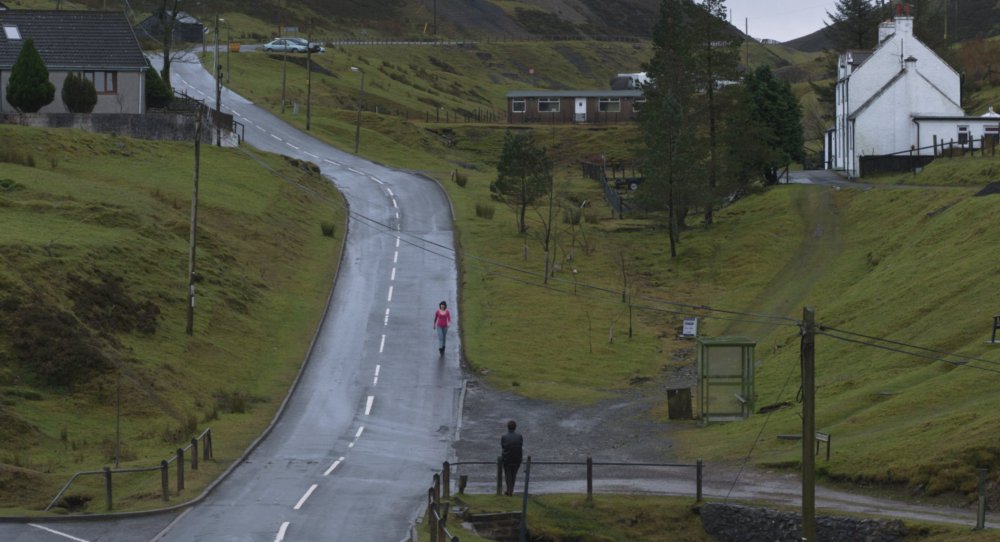
Under the Skin (2013)
Yet for all its clinical detachment, Glazer’s film becomes its own oblique treatise on what it means to be and feel human. The alien seductress’s encounter with the disfigured man presents her with a peer into an abyss of loneliness, triggering confusing feelings of empathy and mercy that send her into a tailspin. Here, for the first time, there is the glimmer of a ghost in the machine: Johansson’s performance remains opaque, all but unreadable, but we sense (or is it only wishful projection?) the awakening of a consciousness – a realisation that people are more than the skin they’re in.
Despite the schematism of this communion between Beauty and ‘Beast’, the savage final scenes in the Scottish Highlands offer no sentimental hosannas; Glazer retains his austere rigour to the finish. With an ending that’s as matter-of-fact as it is mysterious and provocative, Under the Skin confirms him – three terrific films down – as one of Britain’s most exciting filmmakers.
-
Sight & Sound: the April 2014 issue

Jonathan Glazer on Under the Skin, David Mackenzie on Starred Up, Richard Ayoade on The Double, Mark Cousins on A Story of Children and Film and...
-
The Digital Edition and Archive quick link
Log in here to your digital edition and archive subscription, take a look at the packages on offer and buy a subscription.






